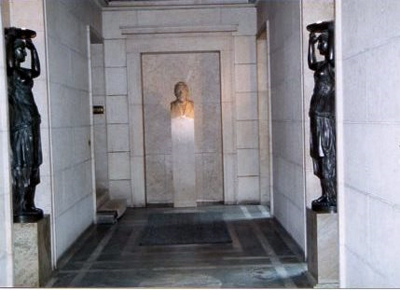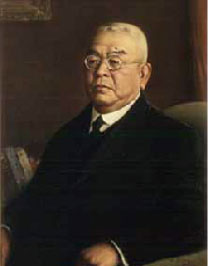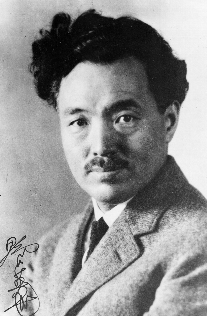News
The Nobel Prize and Japan - Part 1 Updated in October 2020
The Nobel Prize is considered the highest honor in the academic world. This is true in the United States and Europe, and especially so in Japan: The Japanese government automatically awards the Order of Culture─the highest civilian medal in Japan─to each Japanese laureate of the Nobel Prize. No other country goes quite so far to celebrate their Nobel laureates.
Japanese Nobel Prize recipients have increased steeply in the 21st century. Why? Let's explore the secret in this series.
Japan Ranked 5th in the World in the Field of Science
The first Japanese received the Nobel Prize after World War II. There were strong candidates before the war, but they fell just a few steps short from winning the award. Particularly in medical research, Japan had been produced world-class research results even before the war.
Prewar Japan was still a developing country and was far behind trends of world culture and scientific research. However, even as a developing country, the talents of the Japanese were apparent in medical research. There was a secret characteristic to Japanese people. Hideki Shirakawa, who won the 2000 Nobel Prize in Chemistry, unveiled this secret, and has been attracting attention in recent years. I will write about the secret in this series as well.

The table below shows the number of laureates in the scientific fields up to 2017. The Nobel Prize includes three fields in natural science: physics, chemistry, and physiology / medicine, as well as literature, peace, and economics. However, the literary award is chosen every time by balancing out the language and region. There is no clear-cut evaluation standard. This is why there is a spirited debate every time a winner is chosen in the literature category. The Peace Prize is chosen based on political standpoints. Sweden is a well-known anti-communist nation. Therefore, anti-communism and human rights issues are the key factors for selecting the Peace Prize.
The Economics Award was created by the Swedish National Bank in 1968, and is not an award included in Alfred Nobel's will. The director of the Nobel Foundation bluntly told me, “The economics award is not a Nobel Prize.” Indeed, the Nobel Foundation distinguishes it by its name─“The Alfred Nobel Memorial Prize in Economics,” rather than “The Nobel Prize in Economics.”
On the other hand, the three fields in natural science are awarded for achievements that are rigorously evaluated. Evaluations are absolutely fair, which is why the prize is so valuable. At the same time, no mistakes can be tolerated in the performance evaluation. The Nobel Prize Selection Committee has announced that the funds for selection are to be the same amount as the Nobel prize money for each field. Which is to say, a large amount of money goes into selecting a Novel prize winner.
The Nobel Prize was created based on Alfred Nobel's will and his enormous heritage. He made a huge fortune by inventing dynamite; the prize money for 2017 was 8 million Swedish Kronor (approx. 100 million yen). There is no other highly-prized medal in the world. In 1901, when the Nobel Prize award ceremony was first held, the extraordinary prize money made headlines all over the world. This has not changed.
Recipients are limited to 3 people per field, and if multiple people win the prize, the prize money is split. In this case, the Nobel Foundation decides the ratio of how to share the prize. The ratio varies depending on the degree of contribution by each recipient.
| Ranking | Country/Region | Physics | Chemistry | Medicine | Total |
|---|---|---|---|---|---|
| 1 | United States | 85 | 65 | 99 | 249 |
| 2 | United Kingdom | 25 | 27 | 30 | 82 |
| 3 | Germany | 24 | 29 | 16 | 69 |
| 4 | France | 13 | 9 | 10 | 32 |
| 5 | Japan | 11 | 7 | 4 | 22 |
| 6 | Sweden | 4 | 5 | 8 | 17 |
| 7 | Switzerland | 3 | 6 | 6 | 15 |
| 7 | The Netherlands | 9 | 4 | 2 | 15 |
| 9 | Russia | 11 | 1 | 2 | 14 |
| 10 | Canada | 4 | 4 | 2 | 10 |
| 11 | Austria | 3 | 2 | 4 | 9 |
| 12 | Demark | 3 | 5 | 8 | |
| 13 | Italy | 3 | 1 | 3 | 7 |
| 14 | Belgium | 1 | 1 | 4 | 6 |
| 14 | Australia | 6 | 6 | ||
| 16 | Israel | 5 | 5 | ||
| 17 | Norway | 1 | 2 | 3 | |
| 17 | Argentina | 1 | 2 | 3 | |
| 17 | Taiwan | 2 | 1 | 3 | |
| 20 | Hungary | 1 | 1 | 2 | |
| 21 | South Africa | 1 | 1 | ||
| 21 | Spain | 1 | 1 | ||
| 21 | Ireland | 1 | 1 | ||
| 21 | India | 1 | 1 | ||
| 21 | Egypt | 1 | 1 | ||
| 21 | Finland | 1 | 1 | ||
| 21 | China | 1 | 1 | ||
| 21 | Turkey | 1 | 1 | ||
| 21 | Czechoslovakia | 1 | 1 | ||
| 21 | Pakistan | 1 | 1 | ||
| 21 | Portugal | 1 | 1 | ||
| 21 | New Zealand | 1 | 1 | ||
| 21 | Venezuela | 1 | 1 | ||
| (Note) Among the Japanese Nobel laureates, two are American citizens. This is because they were born and educated in Japan but were later naturalized in the United States. The Nobel Foundation does not provide statistics by nationality as some countries allow dual citizenship, which would result in double-counts. | |||||
Prewar Nobel Prize Winner Candidates
As you can see in the table below, all Japanese Nobel laureates were awarded after WWII. Although no Japanese had received the Nobel Prize up to that point, there were strong candidates before the war. Among them, I would like to mention four people who fell short of the prize.
| Year | Name | Affiliation | Reason |
|---|---|---|---|
| Early 1900s | Shibasaburo Kitasato | Institute of Infectious Diseases |
Developed serum therapy |
| 1914-1927 | Hideyo Noguchi | Rockefeller Institute | Discovered cause of paralytic dementia |
| Circa 1925 | Katsusaburo Yamagiwa | Univ of Tokyo Dept of Medicine |
Research on artificial carcinogenesis |
| Circa 1927 | Umetaro Suzuki | Univ of Tokyo Dept of Agriculture |
Discovered Vitamin B1 |
Shibasaburo Kitasato is a researcher who developed modern immunity therapy and made great achievements at the Robert Koch Laboratory in Germany. Emil Behring of Germany won the 1st Nobel Prize in Physiology or Medicine in 1901. However, an important part of Bering's achievements was the result of joint research with Kitasato. Now it is said that it could definitely have been a joint award.

Hideyo Noguchi came closest to the Nobel Prize. Noguchi had only graduated from high school (current junior high school), but he taught himself by reading medical books in German and English, and obtained a doctor's license at the age of 21. It was an astounding achievement even at the time.

Noguchi wanted to become a researcher, but at that time a typical route through the University of Tokyo School of Medicine was not open to him, so he studied abroad at the University of Pennsylvania in the United States. The United States recognized Noguchi's talent and sent him to the Netherlands for a year to study bacteriology.
Upon his return to the United States, Noguchi became the first full-time Asian researcher at the Rockefeller Institute. Through his numerous achievements, between 1913-1927 he was nominated for the Nobel Prize nine times by 24 researchers around the world. Nine times is quite the record!
In 1928, Noguchi went to Ghana to study yellow fever. There, he got infected with yellow fever and died. Dr. Noguchi came the closest to the Nobel Prize among prewar Japanese researchers.
Katsusaburo Yamagiwa and Umetaro Suzuki also made marked achievements in Japan after studying abroad, but also did not win the Nobel Prize.
Original article by Rensei Baba, Science Journalist
Translated by the SSC Secretariat







